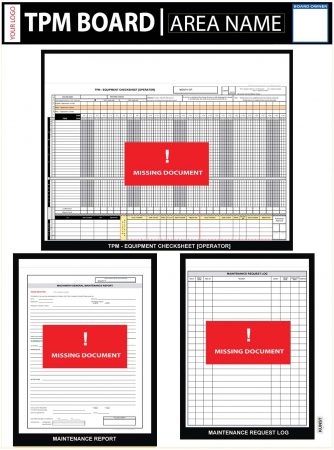
Clean to inspect: How 5S drives improvements
By Richard Kunst
Industry Manufacturing 5S inspect Lean manufacturingIt offers more than workplace organization.

A TPM board template.
GRAPHIC: KUNST SOLUTIONS
Many people default to 5S as a method for workplace organization, which is really a primary result but not necessarily the driver of the methodology.
Ultimately 5S organizes your workplace for a quick way to “clean to inspect” but the benefits trickle into other methodologies as a catalyst for improvement.
At local machine shop in Japan, team members were on top of a machining centre wiping down the top guards, which were not visible from the floor.
The manager explained: “The most sensitive and agile instrument still on the planet today is the human hand. If I can create a work pattern where a human hand touches every inch and aspect of a machine at least once per week, the likelihood of early detection of an issue is exponentially increased.”
When machines arrived at the facility, team members minimized guarding. Exposed wires and hoses were easier to access for cleaning and wiping down componentry, and detecting potential problems. Concerns would then be dealt with.
In Japan where the culture supports no time limits on cleaning to inspect, and cleaning is carried out continuously, you are guaranteed the machine will be touched top to bottom at least on a weekly basis.
How can we make this happen in our plants?
First you need an organized work environment where visually identifying the normal from the abnormal can be done quickly. But cleaning every attribute of a machine weekly can be done another way.
Start by standing at the machine and instruct the team member to clean it from top to bottom, including every wire, hose, nook and cranny. Time every significant process step to rebalance later during reflection.
Cleaning activities
Review the process steps and time, then develop a balance chart. What cleaning activities are required to be completed every day without exception? How long does that take? Take the additional identified cleaning process steps with their times and balance them across five days to establish a standard time for cleaning on a daily basis. This may require expanding the time allocated daily for cleaning, or you may learn ample cleaning time has already been allocated (but there was no process).
To ensure standardization and compliance, add the tasks to a TPM checklist, which are printed on a different colour paper and specific to cleaning and equipment checks defined by day. Corollary audits embedded within the TPM methodology allow a quick and easy check that the tasks have been completed. Or act as an instigator to provide a team member with additional training to complete the task in a safe manner. TPM methodology is available from Kunst Solutions at https://kunstsolutions.com/shop/tpm-tpm-boards).
Richard Kunst is president and CEO of Cambridge, Ont.-based Kunst Solutions Corp. Visit www.kunstsolutions.com. E-mail rkunst@kunstartofsolutions.com.
